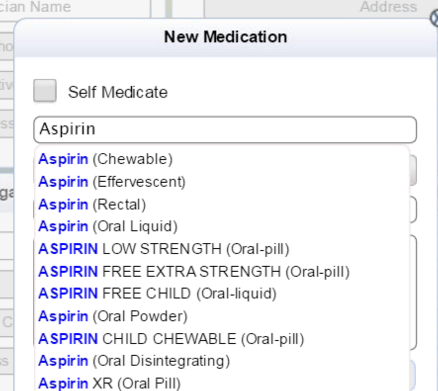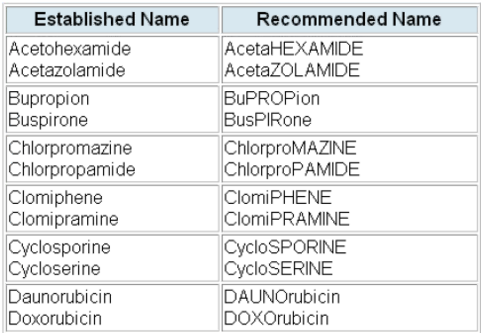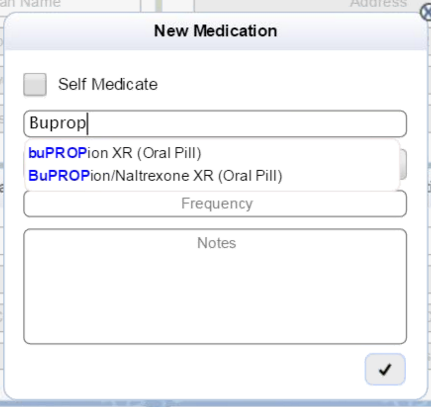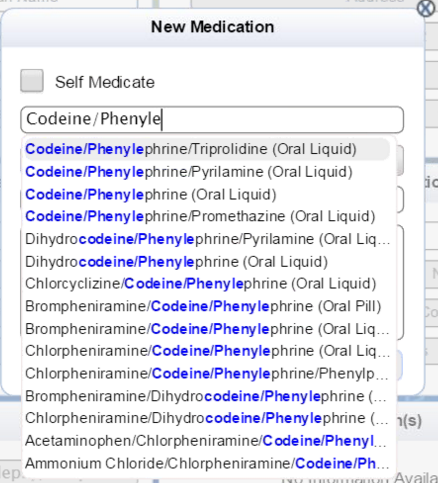
In patch 3.25, an enhancement was added to iRecord which allows users to select from an established list of medications and their associated dosage types. This list is maintained by the National Library of Medicine (NLM) and is used throughout the country by hospitals, pharmacies, medical offices, and other agencies to electronically record and process drug information.
By maintaining a standardized set of normalized and unique medication names, users are able to better ensure drug-related information is recorded efficiently. Medical records may then be transferred between organizations with greater accuracy and less ambiguity.
● Clinical drugs - pharmaceutical products given to (or taken by) a patient with therapeutic or diagnostic intent
● Drug packs - packs that contain multiple drugs, or drugs designed to be administered in a specified sequence
● Generic and brand name drugs
● Many vitamins and over-the-counter supplements
● Radiopharmaceuticals
● Bulk powders
● Contrast media
● Food, including supplemental energy bars and some drinks
● Some dietary supplements
● Medical devices, such as bandages and crutches
● Medications not available in the United States
● Expired, off-market, obsolete, or retired medications*
*Users are unable to find some medications and/or dosages that participants were currently taking. The majority of these were medications that NLM had archived because they were no longer available for new prescriptions for various reasons. DDD IT now allows access to the archived medications and will be adding future enhancements to the system to notify Supports Coordinators of updates to medication availability.
The following tips may help you find medication:
• Search for similar terms and pay attention
to auto-suggestions
For example, instead of searching for "folate," "folic acid"
may be more appropriate.

• Generic terms are available
If a brand name is not provided, many generic terms are available to choose
from:

• Look for letters in all caps (Tall Man
Lettering)
Many medications have very similar names and are easily confused. The FDA
recommends "tall man lettering" to help visually differentiate
between look-alike drug names:

• If an individual or family member sends you an official prescription list, take note of any capitalization that may help you identify the correct medication. iRecord supports this formatting where available.

• Try searching for common misspellings in
the Drugs.com Phonetic and Wildcard Search
Type in how the medication sounds like it might be spelled or enter only
the letters you know are correct. The results will suggest commonly misspelled
drug names and link you to more information to confirm if the medication
is correct.
You may then search in iRecord using the correct spelling.

• Ask the individual or family member to
check the prescription label
Often times, a prescription is written for a name brand medication, but
is filled with a generic instead. Generic alternatives may not always
have the same dosage options available as the brand name version.
Consider expiration dates, too, as medications that are only taken occasionally
or "as needed" may expire without the individual or family realizing
it.
• Try reordering the ingredients for mixed
medications
For example, "Phenylephrine/Codeine" will not return any options,
but the reversed order will:

• Use common language and notes to your advantage
For example, if an individual takes 3-100mg tablets of ibuprofen in the
morning, 1-200mg tablet at night, and additional tablets of either dosage
as needed; do not complicate it any more than it already is. List the
medication and frequency in a logical way, and include additional notes
as needed.
The above example could be described as:
